Traduzione generata automaticamente
Mostra originale
Mostra traduzione
André Derain - Ovid's Heroides Original Etching Edition of 134 Dimensions: 32 x 25 cm Ovide [Marcel Prevost], Héroïdes, Paris, Société des Cent-une, 1938 Andre Derain was born in 1880 in Chatou, an artist colony outside Paris. In 1898, he enrolled in the Academie Carriere in Paris where he met Matisse. He attended art school and in 1900, set up a studio with Maurice deVlaminck. After his military service from 1900-1904, Derain exhibited his work at the Salon des Independants and then at the Salon d'Automne with Matisse, Vlaminck and others, thus creating the movement of Fauvism.He worked with Henri Matisse in 1905 at Collioure, and participated in the 1905 Salon d’Automne with Matisse, Vlaminck, and Braque, the exhibition in which this group was labeled as Fauves, or Wild Beasts. Along with Vlaminck, Derain was one of the first artists to collect the tribal art of Africa which was influential to many of the artists of the early 20th century. In 1906, Derain met Picasso and his dealer, who purchased Derain's entire studio, creating newfound financial success. During this time, he was hired for the illustrations for works by Guillaume Apollinaire and Andre Breton. After World War I, his friend's Cubism movement affected his art, along with influence from Classicism and African Art. Derain stayed in Paris during most of the Occupation, where he was esteemed by the Nazis because of his artistic integrity. Hitler's Foreign Minister commissioned him to paint a family portrait, but he politely refused. His popularity began to decline after the war because of disagreement over new artistic movements. He later lost most of his eyesight due to illness, which may have been the reason he was hit by a truck in 1954, dying from shock at the age of 74. Derain’s Fauve paintings are typically bright with intense color. Influenced by the work of Cézanne as well as the early Cubist paintings of Picasso and Braque’s, Derain’s style changed and by 1912, the paintings became more traditional and structured. For the remainder of his career, he continued to investigate different compositional methods including the perspective of Cézanne and the pointillism of Seurat. He also designed ballet sets and made a number of sculptures. At the turn of the century, Andre Derain exhibited at the radical Fauve Salon d’Automne (1905) and was one of the founding members of the Fauvist movement together with his life-long friends Matisse and Vlaminck. The works he produced in this period, often under the guidance of Matisse, have been counted among the masterpieces of Fauvism. From around 1918, Derain turned his back on the avant-garde and had begun to explore some of the more traditional genres of Western art, including landscapes. His main source of inspiration once the Fauves group had dispersed was found in the Louvre, where he admired the early Renaissance works in particular. Talking of his frequent visits there, he once said, ‘That seemed to me then, the true, pure absolute painting.’ His work evolved through many styles and, most significantly, turned back to the past, particularly after 1922 when Lenin had publicly pronounced his disdain for abstract art. Derain built up an immense and fascinating collection of paintings, sculpture and objets d’art throughout his life which aided his experimentation and was reflected in his work between 1930 and 1945. During these years, his painting technique displayed the most avenues of invention, using a repertoire of primitivist motifs. His eclectic collection was constantly changing. In 1930 he sold his African collection in exchange for bronzes of antiquity and the Renaissance which indicated a real change of interest in the objects, as did his later pursuit of Greek ceramic painting and his enthusiasm for grand cycles of literary and antique themes as the 1930s passed. Between 1947 and 1953 Derain focussed on landscape as subject matter. 'Paysage au bord de la mer', c.1948-50, is a beautifully bold piece that combines both traditional and modern influences. As a later landscape, it is structured with the premeditation and order that harks back to Cezanne and the idea that the painter has the privilege of imposing order upon nature. Derain especially liked to frame his views according to the light, when it seemed to soften the subject, evoking landscapes painted by Corot in the nineteenth century. The effect of this imposed framing is stunning in 'Paysage au bord de la mer', wherein the stark shadows and earthy tones of the foreground landscape are set against the bright light of the seascape behind.
André Derain - Heroides di Ovidio Acquaforte originale Edizione di 134 Dimensioni: 32 x 25 cm Ovide [Marcel Prevost], Héroïdes, Parigi, Société des Cent-une, 1938 Andre Derain è nato nel 1880 a Chatou, una colonia di artisti fuori Parigi. Nel 1898, si iscrive all'Academie Carriere di Parigi dove incontra Matisse. Frequenta la scuola d'arte e nel 1900 apre uno studio con Maurice deVlaminck. Dopo il suo servizio militare dal 1900-1904, Derain espone le sue opere al Salon des Independants e poi al Salon d'Automne con Matisse, Vlaminck e altri, creando così il movimento del Fauvismo. Lavora con Henri Matisse nel 1905 a Collioure, e partecipa al Salon d'Automne del 1905 con Matisse, Vlaminck e Braque, la mostra in cui questo gruppo viene etichettato come Fauves, o Wild Beasts. Insieme a Vlaminck, Derain fu uno dei primi artisti a collezionare l'arte tribale dell'Africa che fu influente per molti artisti dell'inizio del XX secolo. Nel 1906, Derain incontrò Picasso e il suo mercante, che acquistò l'intero studio di Derain, creando un ritrovato successo finanziario. Durante questo periodo, fu assunto per le illustrazioni di opere di Guillaume Apollinaire e Andre Breton. Dopo la prima guerra mondiale, il movimento cubista del suo amico influenzò la sua arte, insieme all'influenza del classicismo e dell'arte africana. Derain rimase a Parigi durante la maggior parte dell'occupazione, dove fu stimato dai nazisti per la sua integrità artistica. Il ministro degli esteri di Hitler gli commissionò un ritratto di famiglia, ma lui rifiutò educatamente. La sua popolarità cominciò a diminuire dopo la guerra a causa del disaccordo sui nuovi movimenti artistici. Più tardi perse la maggior parte della sua vista a causa di una malattia, che potrebbe essere stata la ragione per cui fu investito da un camion nel 1954, morendo per lo shock all'età di 74 anni. I dipinti fauve di Derain sono tipicamente luminosi con colori intensi. Influenzato dal lavoro di Cézanne così come dai primi dipinti cubisti di Picasso e Braque, lo stile di Derain cambiò e dal 1912, i dipinti divennero più tradizionali e strutturati. Per il resto della sua carriera, continuò a indagare diversi metodi compositivi tra cui la prospettiva di Cézanne e il divisionismo di Seurat. Disegnò anche scenografie di balletti e realizzò un certo numero di sculture. Alla fine del secolo, Andre Derain espose al radicale Salon d'Automne fauve (1905) e fu uno dei membri fondatori del movimento fauvista insieme ai suoi amici di sempre Matisse e Vlaminck. Le opere che produsse in questo periodo, spesso sotto la guida di Matisse, sono state annoverate tra i capolavori del Fauvismo. Dal 1918 circa, Derain ha voltato le spalle all'avanguardia e ha iniziato a esplorare alcuni dei generi più tradizionali dell'arte occidentale, compresi i paesaggi. La sua principale fonte di ispirazione, una volta che il gruppo dei Fauves si è disperso, si trova al Louvre, dove ammira in particolare le opere del primo Rinascimento. Parlando delle sue frequenti visite lì, una volta disse: "Mi sembrava allora la vera, pura pittura assoluta" Il suo lavoro si è evoluto attraverso molti stili e, più significativamente, è tornato al passato, in particolare dopo il 1922 quando Lenin aveva pubblicamente pronunciato il suo disprezzo per l'arte astratta. Nel corso della sua vita, Derain costruì un'immensa e affascinante collezione di dipinti, sculture e oggetti d'arte che aiutò la sua sperimentazione e che si riflette nella sua opera tra il 1930 e il 1945. Durante questi anni, la sua tecnica pittorica mostrò il massimo dell'invenzione, utilizzando un repertorio di motivi primitivisti. La sua collezione eclettica cambiò costantemente. Nel 1930 vendette la sua collezione africana in cambio di bronzi dell'antichità e del Rinascimento, il che indica un reale cambiamento di interesse per gli oggetti, così come la sua successiva ricerca della pittura su ceramica greca e il suo entusiasmo per i grandi cicli di temi letterari e antichi con il passare degli anni trenta. Tra il 1947 e il 1953 Derain si concentrò sul paesaggio come soggetto. Paysage au bord de la mer', 1948-50 circa, è un pezzo splendidamente audace che combina sia le influenze tradizionali che quelle moderne. Come un paesaggio successivo, è strutturato con la premeditazione e l'ordine che rimanda a Cezanne e all'idea che il pittore ha il privilegio di imporre un ordine alla natura. Derain ama soprattutto inquadrare le sue vedute in funzione della luce, quando questa sembra ammorbidire il soggetto, evocando i paesaggi dipinti da Corot nel XIX secolo. L'effetto di questa inquadratura imposta è stupefacente in "Paysage au bord de la mer", dove le ombre nude e i toni terrosi del paesaggio in primo piano sono contrapposti alla luce brillante del paesaggio marino dietro.
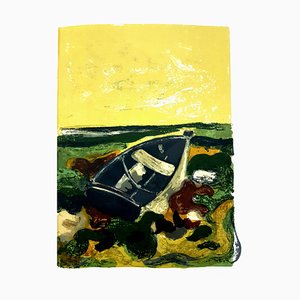
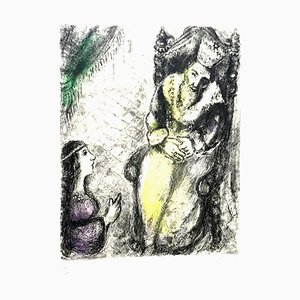
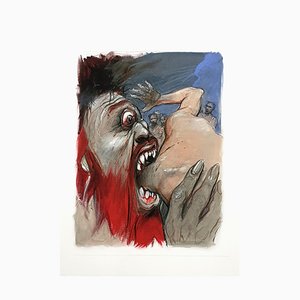
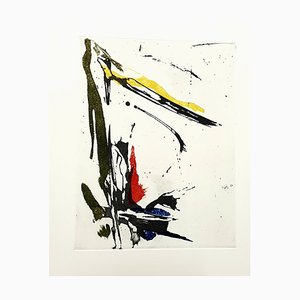
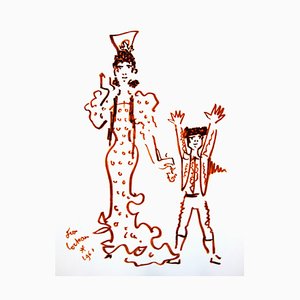


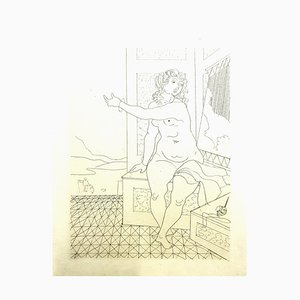
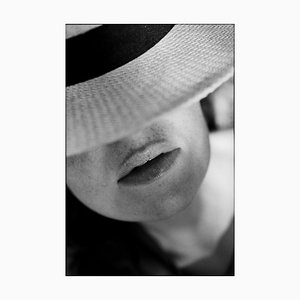

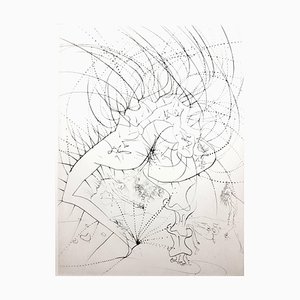
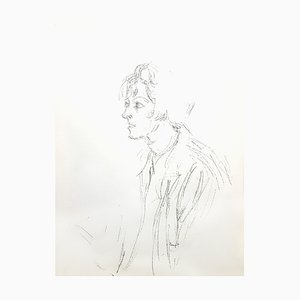
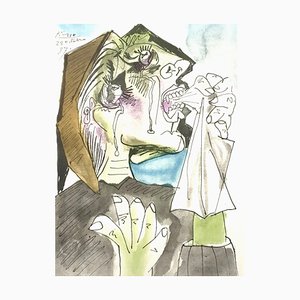
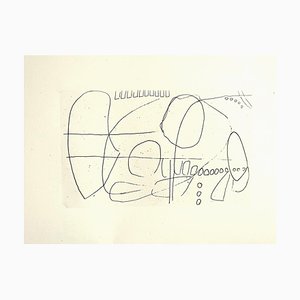
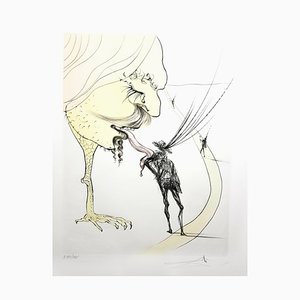
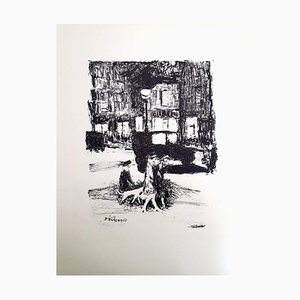
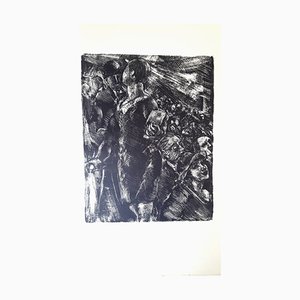
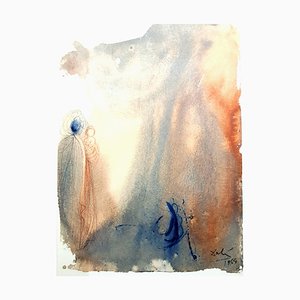
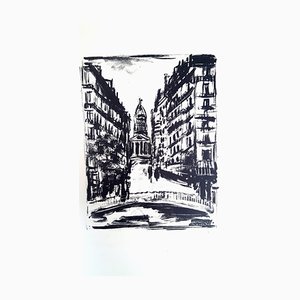
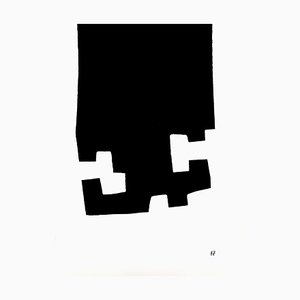
Contattaci
Fai un'offerta
Abbiamo notato che sei nuovo su Pamono!
Accetta i Termini e condizioni e l'Informativa sulla privacy
Contattaci
Fai un'offerta
Ci siamo quasi!
Per seguire la conversazione sulla piattaforma, si prega di completare la registrazione. Per procedere con la tua offerta sulla piattaforma, ti preghiamo di completare la registrazione.Successo
Grazie per la vostra richiesta, qualcuno del nostro team vi contatterà a breve.
Se sei un professionista del design, fai domanda qui per i vantaggi del Programma Commerciale di Pamono